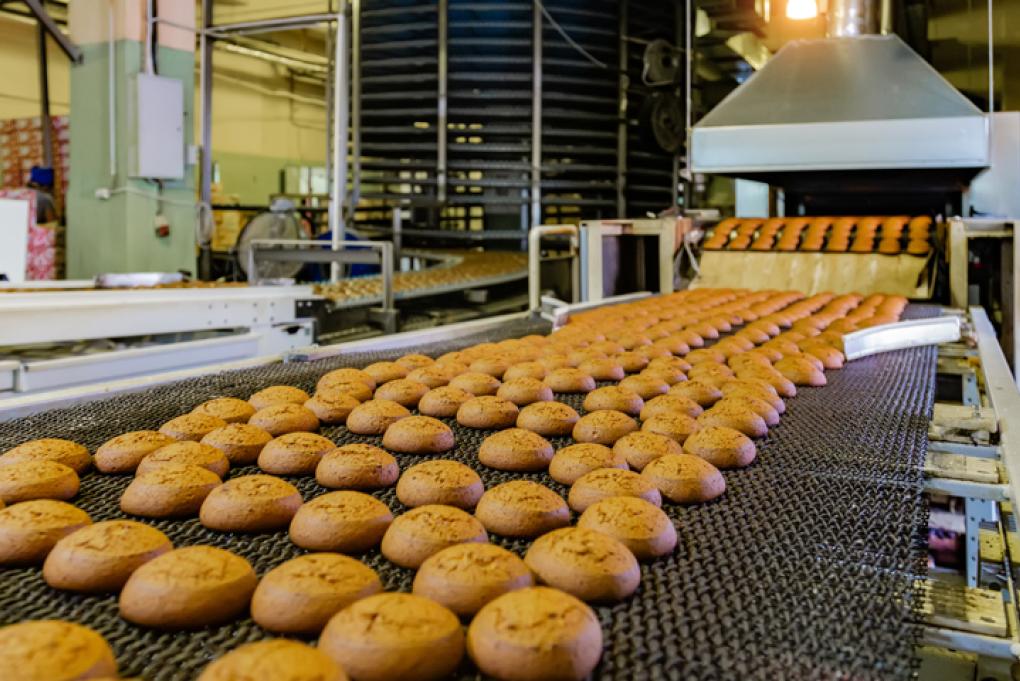
The resilience of Spanish agrifood exports
Agrifood exports have continued to perform very well during the pandemic within a context where international trade has been particularly hard hit by the crisis. Swine meat, fruit and some fresh vegetables have been in greatest demand, while the Basque Country and especially Aragon have been the regions posting the largest growth in exports between January and July 2020. Despite this favourable performance to date, however, the sector is keeping a close eye on developments in global trade tensions, especially between the US and EU and the Brexit negotiations.
A mainstay of Spain's foreign sector that has withstood the crisis
The agrifood industry is a mainstay of the foreign sector for the Spanish economy. In 2019, sales abroad totalled 50.36 billion euros, 5.9% more than in 2018, accounting for 17.4% of all goods exported. Spain is a major exporter of agrifood products: it is the fourth largest exporter in the sector in the EU, behind only the Netherlands,1 Germany and France, and globally it overtook Canada in seventh place in the world ranking of food-exporting countries in 2018 (latest available WTO data), with a global market share of 3.6%, well above the 1.8% share for all goods exports.
- 1The Netherlands exports some domestically produced goods but much of its foreign trade is due to re-exports of goods between European countries that pass through Dutch ports.
Spain is a major exporter of agrifood products:
it ranks fourth in the EU and seventh in the world.
Since last March, the COVID-19 pandemic has had an extraordinarily negative impact on international trade. However, in spite of this general pattern of decline, Spanish agrifood exports grew by 4.9% year-on-year between January and July 2020. Exports from the primary sector were stronger, posting a year-on-year increase of 6.3% in the year to July, while exports by the agrifood industry rose by 4.1% in the same period. Such growth contrasts with the decline in all goods exports (–14.6%), so that the share of agrifood exports out of the total has grown significantly, reaching 30% in April. Agrifood imports also increased during this period but to a lesser extent, so that the external trade surplus of agrifood goods reached a record high in July: 1.30% of GDP (compared with 1.06% in 2019).
Ranking of countries according to their agrifood product exports (2018)

Despite the strong impact of the pandemic on international trade,
Spanish agrifood exports have performed very well.
Which products have contributed the most to export growth in 2020?
The meat sector has led the growth of agrifood exports with a 25% year-on-year increase between January and July 2020, thanks to the rise in sales of swine meat (+35%).2The second group of products with the largest increase is that of canned meat or fish (+13.2%). Next come the product groups of oilseeds and coffee and tea, up by more than 10% but with a smaller share of all exports (close to 1%). More significant is the progress made by fruit (+9.4%), the most exported group (17.6% of all agrifood exports in 2019).
- 2In this article, products are defined according to the 4-digit TARIC system (Integrated Trade Tariffs of the European Union). The TARIC codes considered as agrifood products are between 0101 and 2403. The product groups are defined by their first 2 TARIC digits.
Swine meat and fruit and vegetable products
have led the growth of Spanish agrifood exports during the pandemic.
Among fruits, citrus (TARIC 0805) and apricots, cherries, peaches, plums and sloes (TARIC 0809) have seen strong growth (+18.2% and +17.2% year-on-year until July, respectively). Pulses and vegetables, which accounted for 13.1% of all agrifood exports in 2019, performed more modestly in the first seven months of 2020 (4.3%) but some products such as carrots, cucumbers and cabbages posted very significant increases. On the other hand, some product groups have recorded declines, such as fish, crustaceans and molluscs –15.7%), beverages (–5.2%) and fats (–5.4%). In particular, olive oil exports have fallen by 7.4% year-on-year and wine by 5.4%, although both products are still in the top 5 of exported agrifood products.


How have agrifood exports fared in the different autonomous regions?
Aragon is the autonomous region with the highest growth in exports in the first seven months of 2020 (+33.8%) thanks to its specialisation in swine meat (TARIC 0203), whose demand has picked up strongly, especially from Asian countries. This is followed by the Basque Country (+13.3%) due to the upturn in exports of chemically modified fats and oils (TARIC 1518); Catalonia (+8.8%) also benefited from the boom in swine meat exports and Valencia recovered (+7.6%) due to the effect of citrus products (+16.7%, more than 200 million euros compared with the same period in 2019), in great demand by our trading partners during the COVID-19 crisis. At the other end of the scale were the Balearic Islands and Canary Islands with very sharp falls in their agrifood exports (–28.4% and –25.0%, respectively). Although the share of these exports out of the total exports of island goods is quite low (4.7% and 9.0%, respectively, compared with 17.4% for Spain as a whole), these are not good figures for economies that have already been very hard hit by the huge crisis in the tourism industry.
Agrifood exports by autonomous region
Value of exports in 2019 and growth between January and July 2020

What are the main destinations for Spain's agrifood exports?
EU countries are the main destinations for Spanish agrifood exports, with France and Germany at the top. Both destinations have performed very well in the first seven months of 2020, with advances of 4.7% and 9.5% year-on-year, respectively. They are closely followed by Italy and Portugal which received 9.8% and 8.9% of Spanish agrifood exports in 2019, respectively. These two markets, however, have shown some weakness this year.
EU countries are the main destinations for Spanish agrifood exports.
Uncertainty over future trade relations with the UK and trade tensions with the US have not marred the sector's excellent performance.
In fifth position is the United Kingdom, with 7.7% of the total and the first non-EU destination. Between January and July 2020, exports to the UK grew strongly (6.8% year-on-year), a remarkable fact given the sharp decline in the country's economy in Q2 2020. It is clear that the high level of uncertainty regarding the rules that will govern trade relations between the UK and the EU from January onwards is causing some concern in the sector.
In the hypothetical case that the relationship between these two parties would ultimately involve tariffs, agrifood products (along with textiles and, to a lesser degree, motor vehicles) are among the goods to which higher tariffs, on average, would be applied, according to a Bank of Spain report.3 The same report identifies Murcia as one of the regions that could be most affected by a hard Brexit (or lack of agreement) due to the large volume of fruit and vegetable exports it sends to the UK market. In any case, the study also points out that the vulnerability to Brexit of Spanish exporters to the United Kingdom is partly offset by their relatively high level of productivity and the degree of geographical diversification of their exports.
- 3See «Empresas españolas que exportan bienes al Reino Unido», Bank of Spain, Economic Bulletin 3/2020. https://www.bde.es/f/webbde/SES/Secciones/Publicaciones/Informes-BoletinesRevistas/ArticulosAnaliticos/20/T3/descargar/Fich/be2003-art27.pdf. For a more detailed analysis of the sector's exposure to the United Kingdom, see the Bilateral Agrifood and Fisheries Trade Report with the UK, published by the Ministry of Agriculture (2018). https://www.mapa.gob.es/es/ministerio/servicios/analisis-y-prospectiva/informereinounido2018tcm30-514096.pdf
Trend in agrifood exports to the main destinations

China is the second largest non-EU destination for Spain's agrifood exports, a figure that practically doubled in the first seven months of 2020 compared with the same period last year (+94.1%). This exceptional performance is due to swine meat exports to the country (+216%), still affected by African swine fever.
The next country in the ranking is the United States, with almost 2 billion euros of exports in 2019, 3.8% of the total. However, the recent trend is not very positive since, between January and July 2020, there was a slight decline of 1% year-on-year. This decrease could be related to the higher tariffs (from 3.5% to 25%) imposed by the US on certain agrifood products on 19 October 2019, a decision under the WTO ruling on state aid to Airbus that authorized the US to impose countermeasures to the EU worth 6.8 billion euros, which affected Spain to the tune of about 790 million euros.
The table below details the trend in exports of the main products affected by these measures. It can be observed that Spanish exports to the US of olive oil, fatty cheeses and biscuits are performing well in spite of the tariffs. In fact, exports of these products to the US are growing more than to other destinations. On the other hand, the trend is very bad for wine, olives, certain types of swine meat and lemons. Perhaps the most worrying case is that of olives, as 22% of these exports went to the US in 2019. On the other hand, the share of the US market for other products is lower, so it may be relatively easier to redirect these to other markets.
Main agrifood products affected by US tariffs

However, although the figures do not seem alarming, it should be noted that there is a high degree of uncertainty surrounding the policies that will govern Europe's future trade relations with the US. Trade has been the US government's battleground since the beginning of 2018 when it began its bitter disputes with China as well as the EU, albeit to a lesser degree. Although there was some rapprochement at the end of August (in the end, the US did not carry out its threat to raise tariffs already imposed on European products in October 2019), recent restrictions on technology clearly indicate that trade tensions could easily return and affect the sector again. On the other hand, it is also important to note that the EU is still pushing its trade policy agenda, reaching bilateral trade agreements with other countries such as Canada and Japan, which could open up new opportunities for the agrifood sector.



